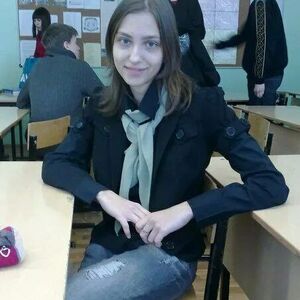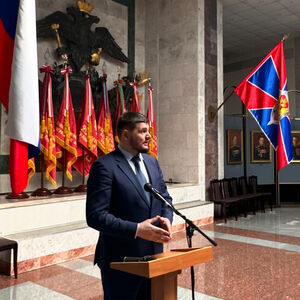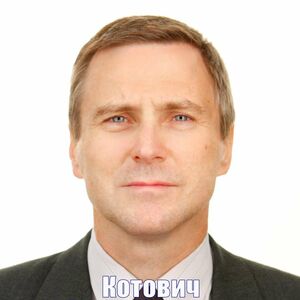3. ВКР система УЧР (печать) (1212964), страница 13
Текст из файла (страница 13)
Table 2–Methods of staff training outside the workplace
| Methods of study | Characteristics |
| Lectures | Passive learning method is used to present the theoretical and methodological knowledge, practical experience |
| Programmedcourses | Effective to obtain theoretical knowledge |
| Conferences, seminars, discussions, "round table", excursions, discussions, meetings with the leadership | The active method of teaching, participation in discussions develops logical thinking and develops ways of behavior in different situations |
| Businessgames | Education to behave in different production situations in negotiations |
| Training | Daily training. One person instructs the other trains on the basics of its activities through intensive training, demonstrations and practical work in order to improve performance |
| Selfeducation | The most simple kind of learning, which does not require an instructor or a special room, but it requires awareness and the desire of the student to learn new skills |
| Methods for solving production and economic problems with the help of models | Students distribute between each otherthe roleof competing with fictitious organizations. Using raw data, students must take the appropriate decisions for the several stages of production or services (production, marketing, financing, staffing, etc.) |
| Quality section | Young professionals develop solutions fordecision of the management problems. Work in groups. |
Based on the calculations of staff movement factors, we can conclude that NPF "Welfare" low percentage of turnover. This suggests that the company is well-developed human resources policy, as well as the basic functions of human resource management system.
The aim of the personnel policy of NPF "Welfare": the formation of a highly professional and motivated team, aimed at the implementation of the strategic objectives of the Fund, and improving the efficiency of current operations.
This object consists of the following sub-goals:
– attraction, retention and consolidation of highly qualified personnel;
– ensuring effective professional adaptation in accordance with modern requirements of the pension business;
– qualitative development of professional, managerial and business competencies;
– the maximum use of the potential of human resources of the Fund;
– formation of loyalty to the Fund by the employer;
– creating a favorable reputation of the Fund as an employer in the labor market.
In accordance with these objectives, the main directions of personnel policy are:
– establishment of a training center NPF "Welfare" (training center technologies pension);
– improving the system of assessment of professional and business skills of staff to make better decisions on the use of human resources potential NPF "Welfare";
– providing the most efficient career professionals (talent management), the formation of a personnel reserve;
– improving the efficiency of financial and non-financial motivation system.
Motivation of staff - one of the ways to increase productivity. The motivation of the personnel is a key focus of personnel policy of any enterprise.
The main forms of motivation of employees are:
1. Portal «BlagoWeb». there is a certain portal to fund employees, where they can do a variety of publications, articles, photo reports, participate in contests, etc. The most active participants in the portal is placed on the so-called "Avenue of Stars" and they charge a "Blagobonusy". At the end of the year summarize, choosing the winner and award him with valuable gifts.
2. Corporate events:
– Health Day;
– New Year;
– Day of the Fund's birth.
3.Nagradami Fund are:
– Thanks to the Fund's Executive Director;
– Diploma of the Executive Director of the Foundation;
– Gold badge NPF "Welfare";
– Silver Sign NPF "Welfare";
– Silver Medal NPF "Welfare" 925;
– Prize statuette of "Golden Wheel" with the diploma of the winner.
Gratitude to the Executive Director of the Foundation awarded to individuals who are actively engaged in the development of private pension provision in the Russian Federation.
Honorary Diploma of the Executive Director of the Foundation awarded to individuals who have achieved significant results in the development of private pension provision in the Russian Federation.
Golden Seal NPF "Welfare" is awarded to fund managers who have experience in the fund is more than 10 years, for personal professional achievements in the development of private pension coverage.
Silver sign NPF "Welfare" is awarded to employees of the Fund who have experience in the fund is more than 10 years, for personal professional achievements in the development of private pension coverage.
Silver Medal NPF "Welfare" 925 awarded to executives and employees of the Foundation for hard work, long-term experience and significant contribution to the work of the Foundation.
The prize statuette of "Golden Wheel" awarded with the Diploma of the Laureate Foundation branch, which took first place in the competition for the branches teams ranked competitive year. During the year, the statuette "Golden Wheel" is stored in the branch-winner.
The work was carried out testing of foundation members.
After analyzing a number of different methods of tests and questionnaires to identify the level of motivation of the employee and his motives, test study motivational personality profile was selected, developed by Sheila Richie and Peter Martin. Their test is focused on the 12 basic human needs. Because different people's needs can be expressed in varying degrees, to determine the individual combination of the most and least significant for the individual needs of Richie and Martin have developed a methodology to assess the so-called motivational profile. This test was chosen because the Foundation the opportunity to quantify the relative importance of the different needs of the individual and present it graphically motivational profile.
Each employee was sent a form to the personal e-mail box, located on the corporate portal. Replies were also received in electronic form.
Test completed as follows: employees 33 questions with 4 possible answers were offered. Between choice questions need to distribute 11 points, where 11 - totally agree, 0 - do not agree. Then, each option is assigned a number in the range of 12 selected motifs, after which the value of each motif is added to obtain the final value. Ranges of values are given scope motives initially.
Blank example of the issues presented in Appendix 2.
Here are the reasons, the importance of which was evaluated in the test:
1) The need for high wages and material reward, the desire to have a job with a good set of benefits and allowances.
2) The need for good working conditions and a comfortable environment.
3) The need for structuring work, the presence of feedback and information to judge the results of the work. The need to reduce uncertainty.
4) The need for social contact: communication with a wide range of people, mild degree of confidence, a close relationship with colleagues.
5) The need to establish and maintain long-term stable relationship, a small number of co-workers, a significant degree of proximity relationships of trust.
6) The need for winning recognition from other people, that others appreciate the merits, achievements and individual achievements.
7) The need to set for themselves boldly challenging goals and achieve them; This figure needs to follow its objectives and be self-motivated.
8) Requirements of influence and power, the desire to lead others; persistent pursuit of competition and influence.
9) The need for diversity, change, stimulation; desire to avoid routine and boredom.
10) The need to be creative, analyzing, thinking worker, open to new ideas.
11) The need for improvement, growth and development as a person.
12) The need for a sense of relevance in an interesting socially useful work.
The procedure for staff training and development in the NPF "Welfare" is carried out in accordance with established goals and objectives for the organization. Regulatory provisions on training and other relevant documents.
Responsibility for the organization of training, methodological support, as well as control over the content and quality of the educational process rests with the Department of Human Resources.
Heads of business units are responsible for the timely, production and economic and general education of its employees, for the retraining of workers and experts, for the creation of appropriate conditions for the training of personnel.
The company conducted training methods like out of work, and without it.
For example, the methods of learning on the job include:
Scientific and production instructions;
- The use of workers as assistants.
Methods of training being discontinued:
- Lectures, trainings
The main goal of learning can be defined as:
1. Hold an employee in an organization, saving it for the company.
2. Promotion of the ladder (the creation of a reserve for managerial positions).
3. Increased productivity and quality of work, as well as product quality.
4. Preventing the degradation of professional specialists.
5. Finding the employees of those types of jobs that match their temperament, needs and nature of the profession.
Systematic evaluation of the effectiveness of training is an essential tool in the work to improve the process. Any control involves the use of a certain order of its results. The feasibility assessment of personnel management processes due to the fact that the data obtained serve as the basis for further decisions in the field of human resource management. The end result of the assessment of learning outcomes is the staff of the organization concluded that the degree of labor utilization efficiency in the organization.
Analysis of human resource management issues
In the human resources management system analysis NPF "Welfare" has been revealed that the system works well and is stable, but it should make some improvements on the training and motivation of staff.
Today is a very rapidly changing as the external environment (economic policy of the state, law and taxation system, new competitors, etc.) and internal conditions of functioning of the organization (enterprise restructuring, strategy and organizational structure of many companies, technological change, the emergence of new work places, etc..), which puts most of the companies before the need to train staff to work in new conditions.
Also changing and the principles on which human resource management is implemented. New organizational strategies require substantial adjustments in personnel management, and training in these conditions becomes a key element of personnel management process. Many organizations are faced with the need to seek the most effective ways to increase productivity and efficiency
Today, for the successful work should be well enough to understand how special and in the common areas. The disadvantage of the employee knowledge and skills needed to successfully perform the tasks assigned to it, not only leads to inefficient operation, but also reduces his job satisfaction. The worse the employee professionally prepared to perform their job functions, the higher his level of energy costs and stresses associated with the work.
To guide was ready to consider training among the top priorities, the training should be useful for the entire organization and for the individual workers. The ratio of management to training is highly correlated with the understanding that any benefits received as a result of the organization and what costs it incurred in the training of various categories of workers.
Therefore, select the benefits that should receive the organization as a result of training:
















